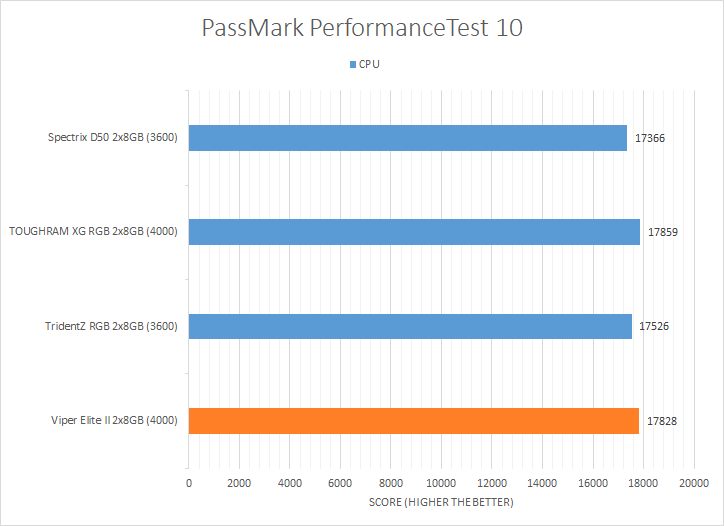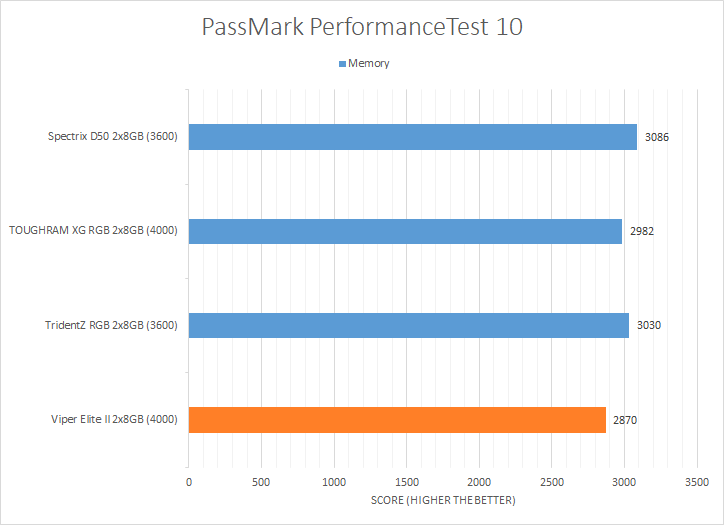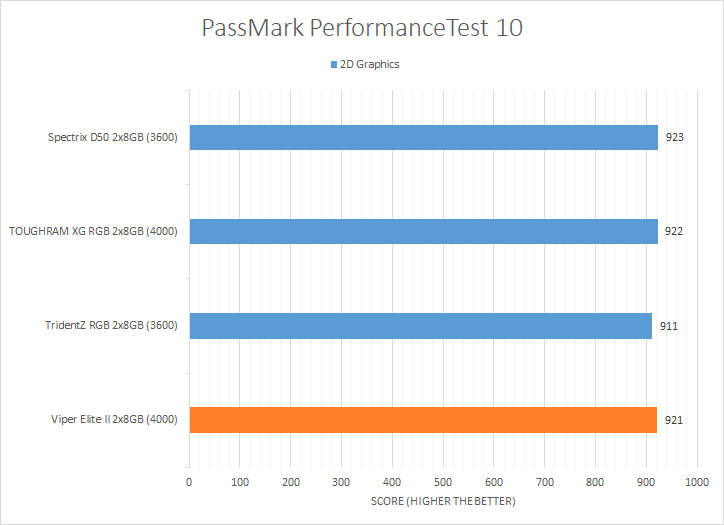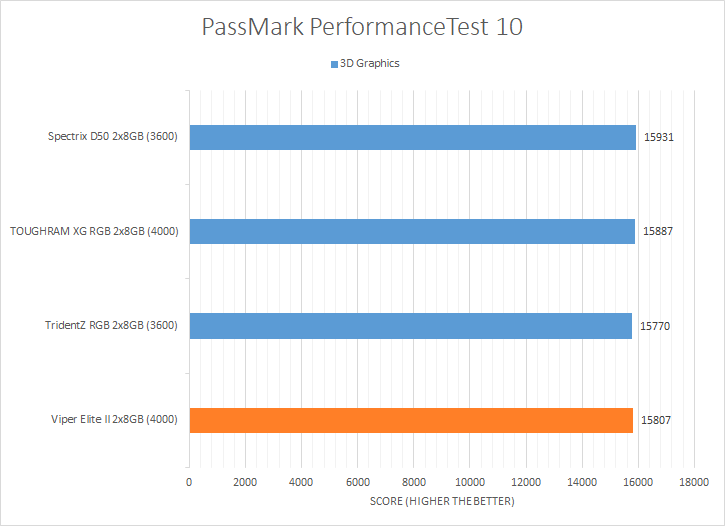Page 8 - Benchmark: PassMark PerformanceTest 10
About PassMark PerformanceTest 10
Fast, easy to use, PC speed testing and benchmarking. PassMark PerformanceTest allows you to objectively benchmark a PC using a variety of different speed tests and compare the results to other computers.
- Find out if your PC is performing at its best.
- Compare the performance of your machine to similar machines.
- Measure the effect of configuration changes and upgrades.
- Avoid paying big bucks for poor performance.
- Make objective independent measurements on which to base your purchasing decision.
- Use the advanced tests to create you own benchmark scenarios
From: Developer's Page




The PassMark Performance 10 tests come down to four categories: CPU, Memory, 2D Graphics, and 3D graphics. This provides a nice variety of tests to perform on system hardware; something I will personally always take when it comes to benchmarking important components such as RAM modules. Even though PassMark Performance 10 takes memory capacity into account to an extent, this does not matter here, since all the tested RAM modules have the same memory capacity. The Patriot Viper Elite II DDR4-4000 2x8GB produced surprising results when it came to the memory-specific test, falling behind the other three kits by a noticeable margin. Interestingly though, the Viper Elite II did well in the CPU segment; just slightly lagging behind the Thermaltake TOUGHRAM XG RGB DDR4-4000 2x8GB. The Viper Elite II also scored on par with the XPG Spectrix D50 DDR4-3600 2x8GB and Thermaltake TOUGHRAM XG RGB DDR4-4000 2x8GB in the 2D graphics test. It had a decent score in the 3D graphics test, which shows there is more going on behind the scenes outside of pure clock frequency.
Page Index
1. Introduction, Packaging, Specifications
2. A Closer Look, Test System
3. Benchmark: AIDA64 CPU
4. Benchmark: AIDA64 FPU
5. Benchmark: AIDA64 Memory
6. Benchmark: PCMark 10
7. Benchmark: 3DMark
8. Benchmark: PassMark PerformanceTest 10
9. Benchmark: SuperPI 1M, Cinebench R23
10. Overclocking and Conclusion





